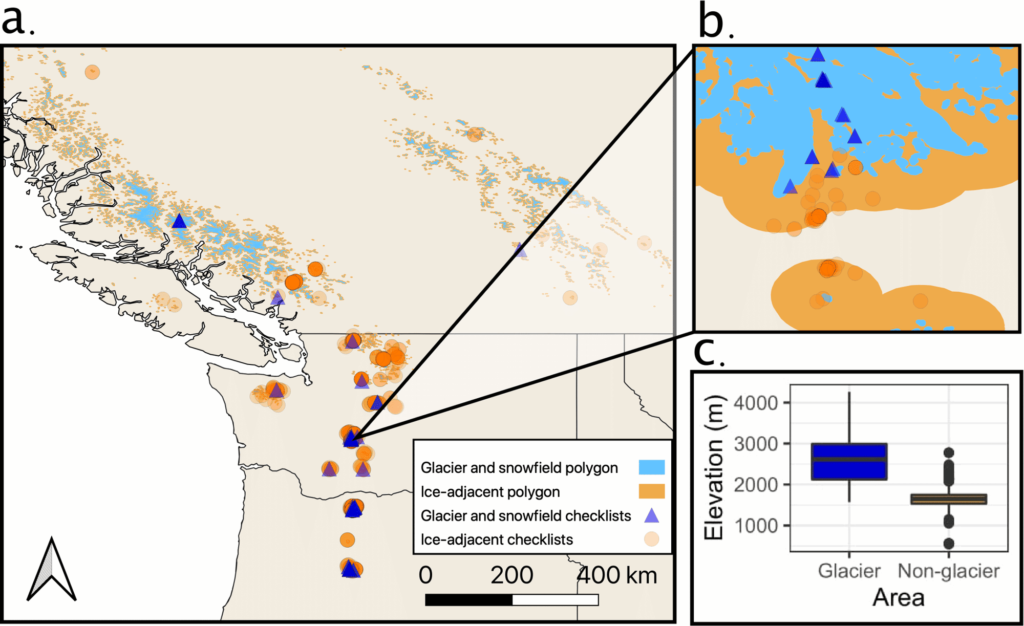During each February the Great Backyard Bird Count occurs. Collectively, 7,538 species of birds – 2/3s of the known 10,960 species were found this year. More than 200 countries shared bird sightings. eBird is a global database of bird observations. It is an amazing tool for birders to keep track of their sightings, but it is also much more than that. It is a repository for citizen-science observations on an unprecedented scale.

In graduate school we used to say that “ecology is natural history with numbers”. That’s so true. A natural history view of the world looks at plants, animals, rocks, etc. and describes their location, shape, size, color, behavior, life cycle, and whatnot. So “an American Robin is a small to medium-sized bird known for its distinctive red breast, contrasting sharply with brownish-gray upperparts. Male and female robins have similar coloration, but the male may have slightly brighter colors during the breeding season. They lay 4-5 blue eggs…..” And so forth.
For many, many years, that’s what natural historians and ornithologists did – describe birds and their habits. Arthur Cleveland Bent is one of the most well-known natural historians of birds, producing the voluminous Life Histories of North American Birds. I owned the whole series and read most of it years ago.
But descriptions tell us just so much. This is interesting and essential information but what does it tell us about the robin’s population or its management? What about the robin’s weight, food requirements, migratory times and route, longevity, mortality, genetics, metabolism, and population changes over time? We need to collect heaps of information on lots of birds, both living and those in museums that were collected in the past. We need information that gives us numbers, but it seems that numbers in ornithology only became important in the 1940’s when quantitative ornithology was first mentioned.
Quantitative ornithology uses mathematical and statistical methods to analyze data collected. It involves using various techniques to gather and analyze large amounts of data on bird populations, behavior, and ecology.
Quantitative ornithologists collect data on birds through a range of methods, such as bird banding, bird population surveys, acoustic monitoring, and remote sensing. They then use mathematical and statistical models to analyze the data to understand bird population dynamics, species distribution, and migration patterns, among other factors.
One of the main benefits of quantitative ornithology is that it allows scientists to make predictions about bird populations and the effects of various factors on bird behavior and ecology. For example, researchers can use mathematical models to predict the impact of climate change or fire on bird populations, or to assess the effectiveness of conservation efforts.
Data on birds allows researchers to test hypotheses and develop theories about bird behavior and ecology. By analyzing large amounts of information, scientists can identify patterns and relationships that might not be visible with the naked eye.
Those data tells us that the global breeding population of the American Robin is 370 million. The birds rate a 5 out of 20 on the Continental Concern Score, indicating a species of low conservation concern. American robins are classified as Least Concern (LC) on the IUCN Red List and their numbers today are increasing. Their life span is 2-14 years. Information gleaned only through numbers.